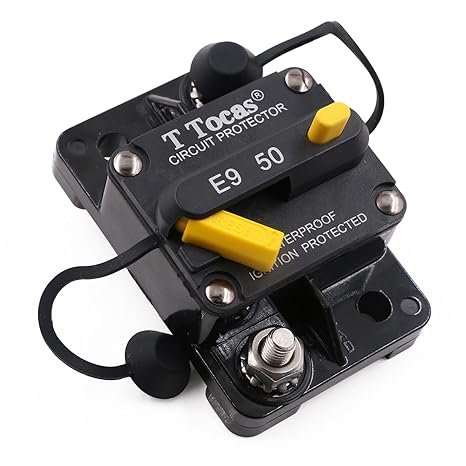
Introduction to Trolling Motors
Trolling motors play a critical role in enhancing both marine and ATV experiences, providing the precision and quiet maneuverability needed in diverse water conditions. Whether you’re an avid fisherman or a recreational boater, understanding the significance of trolling motors is essential. Essentially, a trolling motor is a self-contained unit that includes an electric motor, propeller, and controls and is attached to either the bow or stern of a boat. Unlike the primary outboard engine, a trolling motor is used predominantly for slow and controlled movements.
There are two main types of trolling motors: electric and gasoline-powered. Electric trolling motors are the most common and are praised for their quiet operation and ease of use. These motors are powered by a battery, making them ideal for fishing and other activities where silence and precision are crucial. Gasoline-powered trolling motors, on the other hand, offer higher power and longer operational periods before refueling. They are typically favored in situations requiring more extended and strenuous use.
The primary applications of trolling motors include fishing, where silent approaches to potential catch sites are vital, and precise maneuverability in tight spots or around obstacles. Furthermore, trolling motors are indispensable in navigating shallow waters, where a traditional outboard motor might cause disturbances or become a hindrance. For ATV vehicles used in aquatic environments, these motors provide the same advantages, ensuring operators can enjoy a smooth and stealthy experience.
In summary, trolling motors significantly elevate the overall experience on water by offering controlled, quiet operation, whether in fishing, maneuvering in shallow waters, or ensuring a stealthy aquatic journey. By leveraging the unique benefits of either electric or gasoline-powered types, users can tailor their choices to suit specific needs, ensuring an optimal balance of efficiency, power, and tranquility.
Choosing the Right Trolling Motor for Your Needs
Selecting the appropriate trolling motor for your marine or ATV vehicle necessitates a comprehensive understanding of various critical factors. Chief among these is the thrust power, which should be adequately matched to the size and weight of your boat or ATV. Thrust power, measured in pounds, determines the motor’s ability to move through water efficiently. For example, a heavier boat or one that frequently carries a larger load may require a higher thrust motor to ensure optimal performance.
Voltage is another crucial element. Trolling motors generally come in 12V, 24V, and 36V configurations. The choice depends on the desired power and duration. A 12V system is often sufficient for smaller boats or shorter trips, whereas 24V and 36V systems provide greater power and longer operational times, making them suitable for larger vessels or extended fishing excursions.
Shaft length is an additional consideration—it must be compatible with the height of the boat’s transom or bow. An improperly matched shaft length could negatively impact the motor’s effectiveness and maneuverability. To gauge the appropriate length, measure the distance from the mounting surface to the waterline and consult manufacturer guidelines.
Control options are varied, typically including hand, foot, or remote controls. Hand controls offer simplicity, whereas foot controls afford hands-free operation, advantageous for tasks like fishing. Remote controls provide the ultimate convenience, allowing users to adjust settings from anywhere on the boat.
Matching the trolling motor to the type of vessel or ATV, as well as considering specific use cases like fishing, recreational boating, or hunting in wetlands, ensures the chosen motor meets practical needs. For instance, a high-thrust motor with remote control might be optimal for fishing enthusiasts navigating through currents, while a compact, durable motor could suffice for lighter, recreational activities.
Brand reputation and customer reviews serve as invaluable resources during the selection process. Established brands often guarantee reliable performance and customer support. Evaluating customer feedback offers first-hand insights into the motor’s durability, ease of use, and overall satisfaction, thus aiding in making an informed decision.
Installation and Maintenance Tips
Installing a trolling motor on your boat or ATV vehicle is a process that requires precision and adherence to specific guidelines to ensure optimal performance. Begin by selecting a suitable mounting location that provides adequate support and is free from obstructions. The chosen spot should offer sufficient clearance for the propeller, considering both vertical and horizontal movement.
Once the location is determined, drill the necessary holes and secure the trolling motor mount using the hardware provided by the manufacturer. It’s crucial to follow the torque specifications to avoid over-tightening or under-tightening the bolts. Connecting the electrical components correctly is paramount; ensure that the wiring is compatible with both the motor and the vehicle’s electrical system. Use marine-grade connectors and heat shrink tubing to protect against corrosion and water ingress.
For the electrical connections, always refer to the manufacturer’s wiring diagram to avoid errors. Make sure the battery is appropriately charged and firmly secured in its compartment. It is advisable to use a circuit breaker between the motor and the battery to prevent possible electrical damage.
Maintenance of your trolling motor is equally important to extend its lifespan and maintain efficiency. Regular inspections should include checking the propeller for debris, fishing lines, or damage, as well as ensuring that all nuts and bolts remain tight. Cleaning the motor with fresh water after each use can help to prevent the buildup of salt or grime. Additionally, periodic lubrication of the motor’s moving parts is recommended.
Troubleshooting common issues, such as unusual vibrations or a drop in thrust, often involves inspecting the propeller and the electrical connections. Addressing these early can prevent more serious problems. For off-season storage or long periods of non-usage, winterizing your trolling motor is essential. This includes removing the motor from the boat, cleaning it thoroughly, and storing it in a dry, cool place. Disconnecting the battery and storing it separately can also help preserve its charge and prolong its life.
Following the manufacturer’s guidelines at every step—from installation to maintenance—ensures that your trolling motor operates reliably and efficiently. Regular care and preventive measures can significantly enhance the performance and durability of your trolling motor, providing a smoother and more enjoyable boating experience.
Enhancing Performance and Longevity
Optimizing the performance and extending the lifespan of trolling motors are essential practices for any boat or ATV enthusiast. Effective battery management is a crucial aspect, beginning with understanding the importance of proper charging routines. Always use a smart charger compatible with your battery type to ensure optimal charging cycles. Avoid leaving batteries in a discharged state for extended periods, as this can lead to sulfation and diminished capacity. Regularly inspect and clean battery terminals and connections to prevent corrosion and ensure efficient power delivery.
When it comes to storage, keeping batteries in a cool, dry place is recommended to prevent degradation. For off-season storage, ensure batteries are fully charged and disconnected to avoid phantom drain. Utilizing battery maintainers or trickle chargers can also be beneficial in keeping batteries at an optimal charge level while in storage.
Efficient navigation through various water conditions is another vital factor in maximizing the performance of your trolling motor. Adjusting the motor speed in response to current conditions can reduce strain on the system. For example, navigating through heavy vegetation or strong currents may require short bursts of higher power rather than sustained high-speed operation, which can quickly drain your battery.
Incorporating advanced technology such as GPS anchoring systems can significantly enhance your trolling motor’s performance. These systems allow for precise, automatic positioning, reducing manual adjustments and improving overall efficiency. With GPS-enabled trolling motors, you can maintain a steady position, even in windy or choppy water conditions, thereby saving battery life and enhancing fishing or exploring experiences.
Finally, consider investing in accessories and upgrades to further enhance your setup. High-quality propellers, durable mounting brackets, and wireless control systems can contribute to smoother and more efficient operation. Regular maintenance, including checking motor seals and lubricating moving parts, will also ensure your trolling motor runs optimally for years to come.
buy product
Discover more from detoatepentrutotisimaimult
Subscribe to get the latest posts sent to your email.
